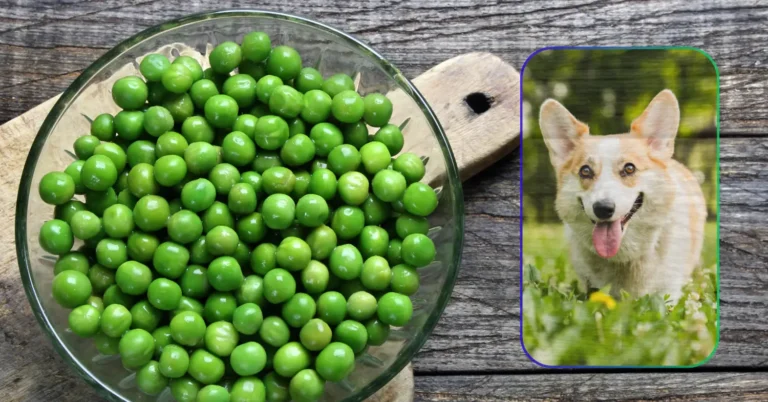Can dogs eat peas? Peas are a type of legume which is high in protein and fiber, as well as other essential nutrients. This means that they can be a healthy addition to your dog’s diet, but there are a few things you should keep in mind before feeding them to your pup. In this article, we will explore the nutritional benefits of peas for dogs, as well as the potential risks associated with feeding them to your pet.
Another Interesting Read: Can Dogs Eat Mango? Mango Nutritional Value
Peas, those small and beloved vegetables, often find their way into various meals we cook. They are known for their versatility and nutrient-packed goodness for us humans. But what about dogs? Can dogs eat peas? In this guide, we will explore the ins and outs of including peas in your canine companion’s diet.
Can Dogs Eat Peas?
Yes, dogs can eat peas. Peas are a good source of vitamins and minerals, and they’re a low-fat, low-calorie treat. Just be sure to introduce them slowly to your dog’s diet, as sudden changes can cause stomach upset. And as with any new food, always check with your veterinarian first.
Nutritional Value Of Peas
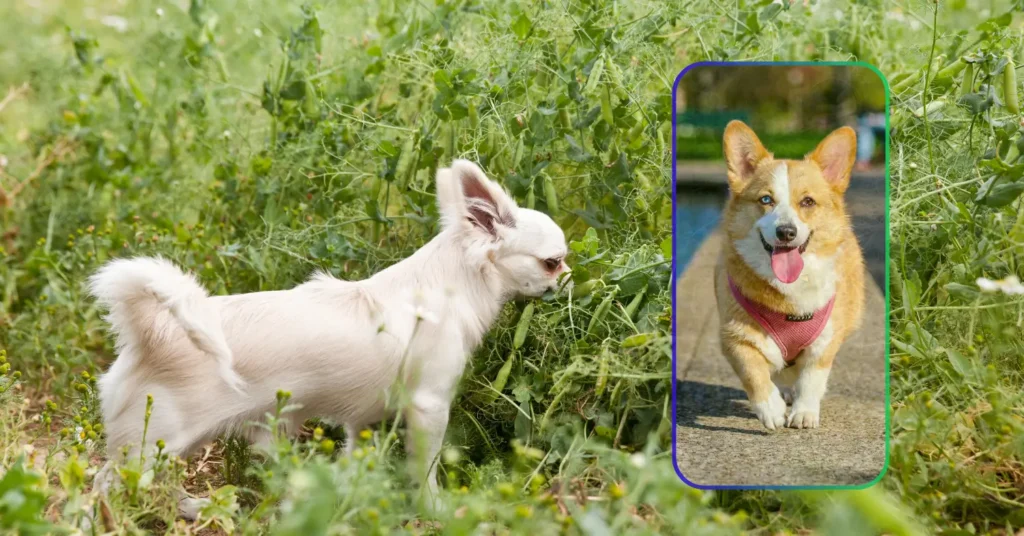
Peas are a good source of protein, fiber, vitamins, and minerals. They are also low in calories and fat. Peas are a good source of protein. One cup of cooked peas contains about 8 grams of protein. This is about the same amount of protein found in one egg. Peas are also a good source of fiber. One cup of cooked peas contains about 4 grams of fiber. Fiber is important for keeping the digestive system healthy.
Vitamins and minerals are essential nutrients that the body needs to function properly. Peas are a good source of several vitamins and minerals, including vitamin A, vitamin C, potassium, and iron. Peas are also low in calories and fat. One cup of cooked peas contains only about 116 calories.
The nutritional value of peas may vary depending on how they are prepared. For example, peas that are canned or frozen may have fewer nutrients than freshly cooked peas. Peas that are processed into pea flour or pea protein powder may also have different nutrient levels.
Health Benefits Of Peas To Feed To Dogs
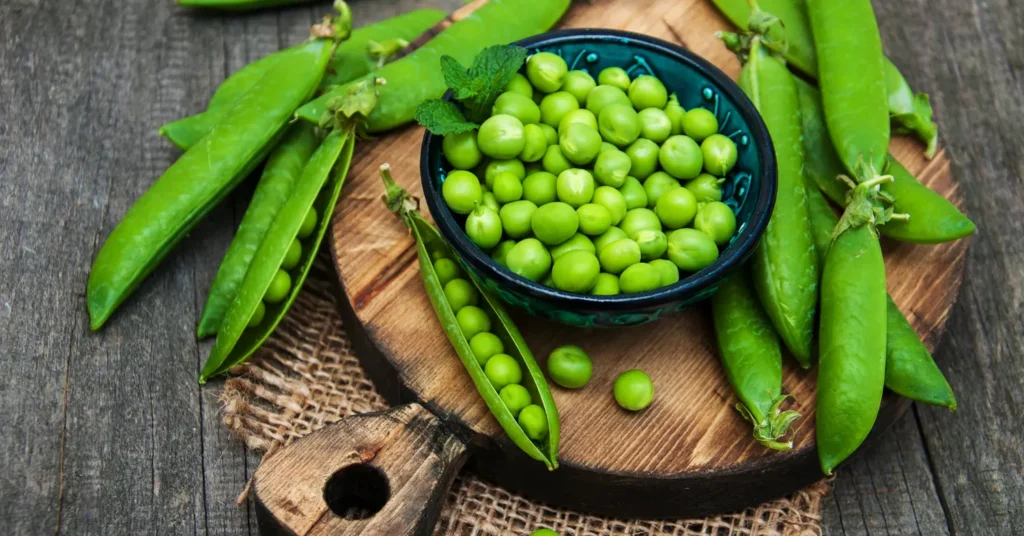
There are several health benefits associated with feeding peas to dogs. Peas are a good source of protein and fiber, which can help support a healthy digestive system. Peas are also a good source of vitamins and minerals, which are essential for the proper function of the body. Some of the specific health benefits associated with feeding peas to dogs include:
1. Protein For Muscle Development
Protein is an essential nutrient that is responsible for the growth and repair of tissues. It is also necessary for the production of enzymes and hormones. Dogs need protein for proper growth and development, as well as to maintain a healthy weight. Peas are a good source of protein, which can help support your dog’s muscles and other tissues.
2. Fiber For Digestive Health
Fiber is an important nutrient for keeping the digestive system healthy. It helps to add bulk to the stool and can help to prevent constipation. Fiber can also help to regulate blood sugar levels and promote a feeling of fullness. Peas are a good source of fiber, which can help to keep your dog’s digestive system healthy.
3. Vitamins And Minerals For Overall Health
Vitamins and minerals are essential nutrients that the body needs to function properly. Peas are a good source of several vitamins and minerals, including vitamin A, vitamin C, potassium, and iron. These nutrients are important for maintaining a healthy immune system, promoting proper cell growth, and supporting other vital functions.
Cooking Considerations
However, a crucial point to bear in mind is the preparation of peas for your dog. It’s advisable to cook them beforehand, as raw peas might pose digestion challenges. Fresh or frozen varieties are suitable, but steer clear of canned peas due to potential added sodium.
When introducing peas to your dog’s diet, commence with a small quantity and gradually increase it to prevent any digestive issues.
By adhering to these straightforward guidelines, you can ensure your dog reaps the benefits of incorporating peas into their diet.
Peas in a Puppy’s Diet
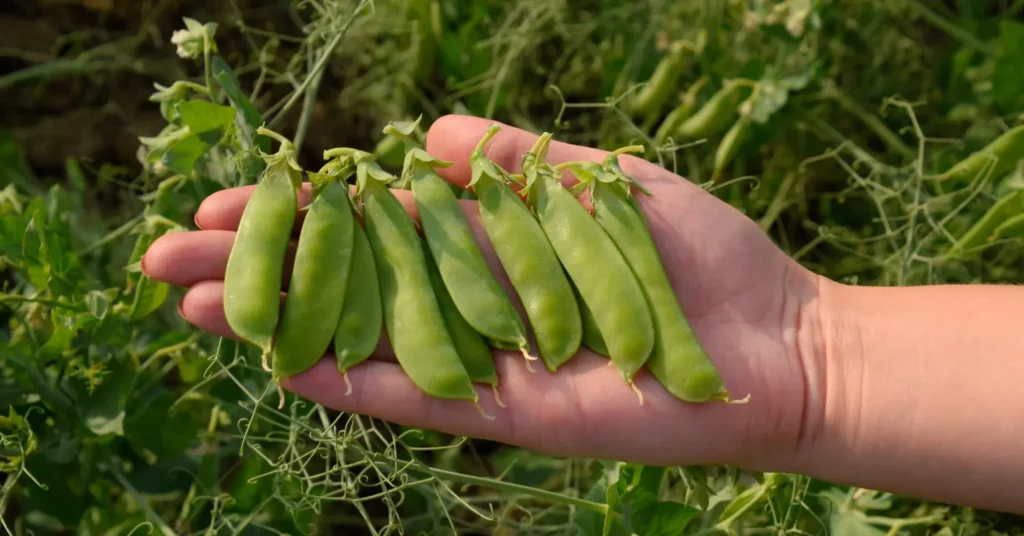
For puppy parents, providing a balanced and nutritious diet is paramount for their young furry companions’ growth and well-being. So, if you’re pondering, “Can puppies eat peas?” the affirmative answer is indeed encouraging. Puppies can derive nutritional goodness from peas, encompassing essential vitamins, minerals, proteins, and fiber. Whether it’s green peas, snow peas, sugar snap peas, or garden peas, these legumes can be a wholesome treat for your young canine friend.
Cooking Caution for Puppies
When introducing peas to a puppy’s diet, caution is advised. Given their delicate digestive systems, it’s imperative to cook the peas before serving, avoiding raw peas. Similar to adult dogs, fresh or frozen peas are suitable, but canned peas should be avoided due to potential excessive sodium content.
Commence with a small portion and observe your puppy’s response, gradually increasing it over time while ensuring it agrees with their stomach.
With these considerations, you can safely integrate peas into your puppy’s diet, contributing to their overall well-being.
The Health Benefits of Peas for Dogs
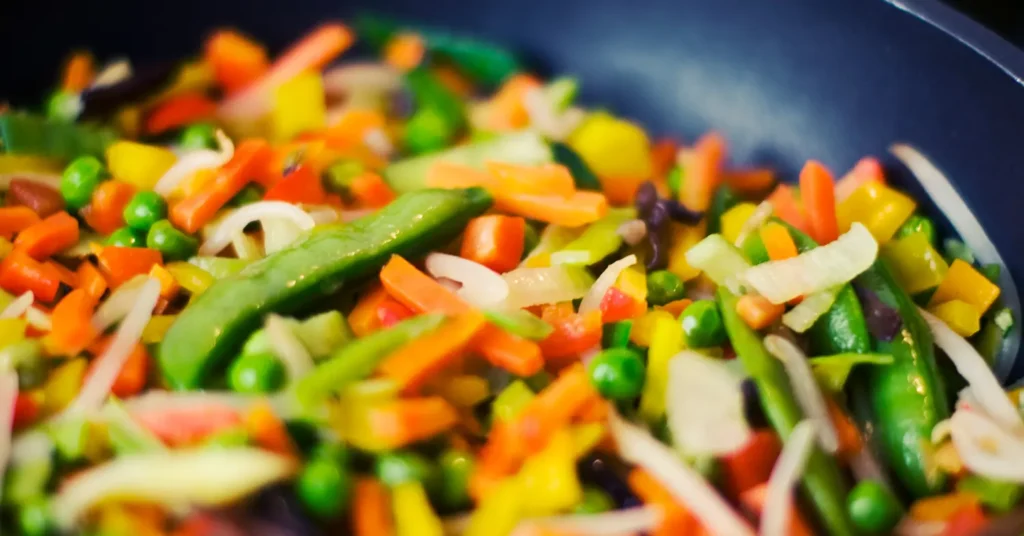
Peas boast a commendable nutritional profile, offering vitamins and minerals such as vitamin A, vitamin C, iron, and magnesium. Beyond that, they provide fiber, promoting digestive health. Laden with antioxidants and phytonutrients, peas also support the immune system. Low in calories, they are an ideal choice for dogs aiming to lose or maintain weight.
Let’s delve into the nutritional content of readily available frozen peas, boiled and drained:
However, if your dog has kidney issues, it’s advisable to avoid feeding them peas due to the purines they contain, which can impact kidney health.
Cooking Peas for Your Dog
Optimal preparation involves cooking peas before adding them to your dog’s food. Boil them until soft, then drain, ensuring they are a safe and palatable addition. If your dog is hesitant about whole peas, mashing them and mixing with their food is a viable option. While raw peas in moderation are safe, canned peas should be avoided due to potential additives.
Here’s a quick rundown of which peas are suitable for dogs:
When introducing peas into your dog’s diet, the key is gradual progression. Start with a small amount and incrementally increase it to monitor your dog’s digestive response, ensuring a smooth transition.
Potential Risks Of Feeding Peas To Dogs
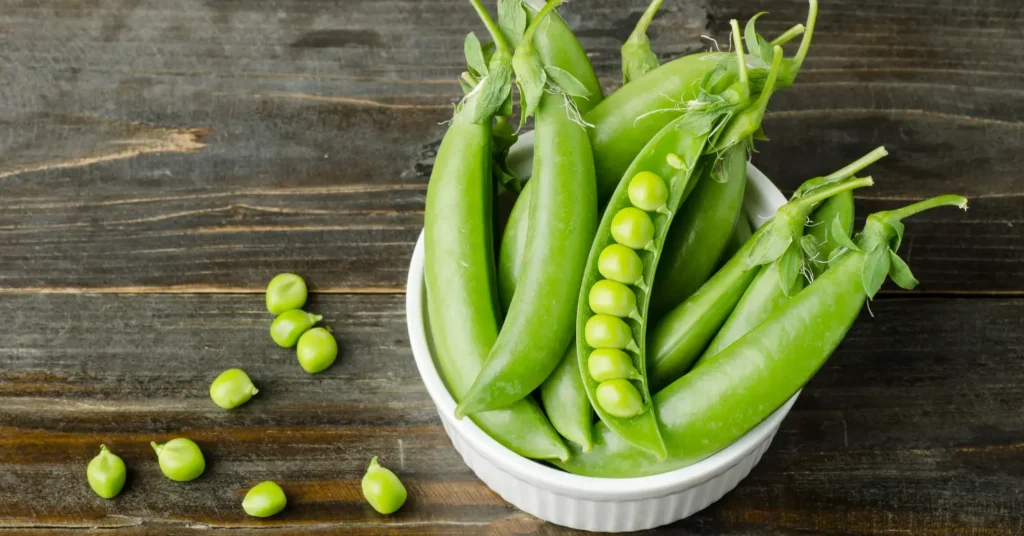
There are some potential risks associated with feeding peas to dogs. Peas contain a compound called lectin, which can cause stomach upset in some dogs. Additionally, peas are high in fiber, which can cause gas and bloat. If you’re considering feeding peas to your dog, be sure to check with your veterinarian first.
When feeding peas to dogs, it’s important to start slowly and increase the amount gradually. This will help your dog’s digestive system adjust to the new food. Peas should be fed in small amounts as part of a healthy, balanced diet. Consult with your veterinarian if you have any questions about the best way to feed peas to your dog.
Peas Can Help Improve A Dog’s Digestion
Peas are a great source of fiber, which can help improve your dog’s digestion. They’re also low in calories and fat, making them a healthy treat for your pup. Just be sure to cook the peas before feeding them to your dog, as raw peas can cause stomach upset.
Dogs are known for their soft, fluffy coats. But sometimes, even the best-looking pups can suffer from dry, itchy skin. This is especially true during the cold winter months when the air is dry and the temperatures are low.
If your dog is scratchy and uncomfortable, you may be wondering what you can do to help. The good news is that there are a few simple dietary changes you can make that can improve your dog’s skin and coat health. One of these changes is adding peas to your dog’s diet.
Peas Can Help Reduce Inflammation In Dogs
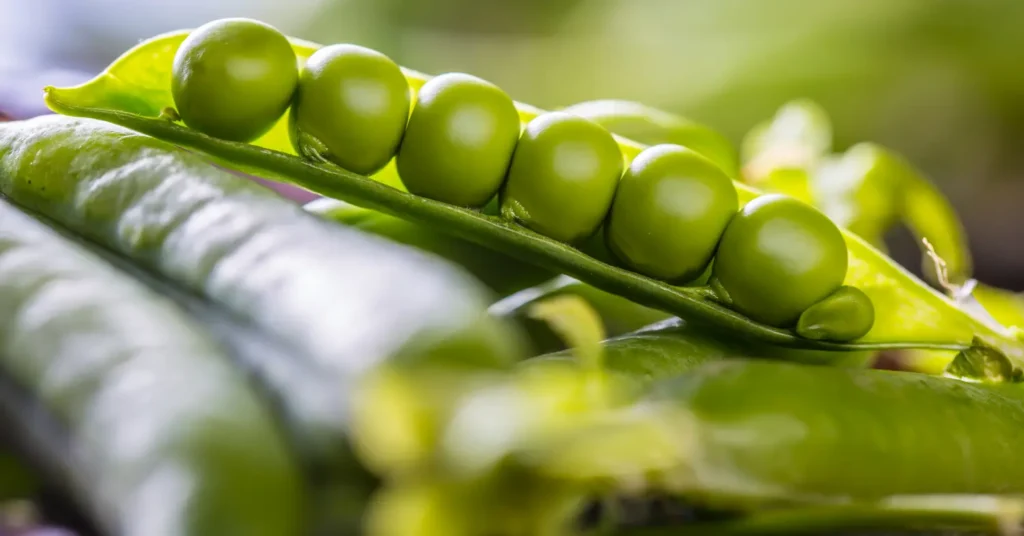
Many people don’t realize that the humble pea can actually be quite beneficial for dogs. Peas are a great source of vitamins, minerals, and antioxidants, and they can help to reduce inflammation in dogs.
1. Vitamin C
One of the most important vitamins found in peas is vitamin C. Vitamin C is a powerful antioxidant that can help to protect dogs from free radical damage. Free radicals are unstable molecules that can damage cells and lead to inflammation. Vitamin C helps to neutralize free radicals, preventing them from causing damage.
2. Vitamin E
Peas are also a good source of vitamin E. Vitamin E is another antioxidant that can help to reduce inflammation. It works by scavenging for free radicals and neutralizing them. Vitamin E is also known to boost the immune system, making it an ideal nutrient for dogs with allergies or sensitivities.
3. Manganese
Manganese is a mineral that is found in peas. Manganese plays a role in several important processes in the body, including energy production, immunity, and detoxification. Manganese is also known to have anti-inflammatory properties.
4. Fiber
Peas are also a good source of fiber. Fiber is important for dogs for a number of reasons. First, it helps to regulate digestion. Second, it can help to reduce inflammation by binding to toxins and removing them from the body. Third, fiber is prebiotic, meaning it helps to promote the growth of healthy bacteria in the gut.
Summary | Can Dogs Eat Peas? Risks And Benefits Of Peas
We’re specifically referring to green peas, encompassing varieties like snow peas, sugar snap peas, and garden or English peas. Your canine companion can partake in fresh, frozen, or thawed peas, but steer clear of canned peas. Much like various canned veggies, canned peas often come with an excess of sodium, posing harm to both dogs and humans.
When it comes to pea pods, a simple guideline prevails: if humans can consume the pod, so can your dog. Garden peas, naturally, require shelling. However, exercise caution with pods to prevent any choking hazards in your dog’s throat. As with any new addition to their diet, monitor for adverse reactions, such as diarrhea or vomiting.
Peas emerge as a nutrient powerhouse, offering vitamins such as A, K, and the B vitamins. Loaded with minerals like iron, zinc, potassium, and magnesium, they also boast substantial protein content, a reason behind their inclusion in commercial dog food. Additionally, peas feature high fiber levels and contain lutein—an antioxidant renowned for promoting skin, heart, and eye health. Yet, like any human food, peas have their considerations; they aren’t advisable for dogs with kidney problems due to the presence of purines, natural compounds that can lead to kidney-related issues if consumed excessively.
While dogs don’t necessitate fruits and vegetables in their diet akin to humans, being carnivorous creatures, peas serve as a commendable low-calorie option for an occasional snack or treat. So, relish the goodness of peas with your furry friend, especially when they’re in their prime during the season of abundance.
You Might Also Like:
How to Draw a Dog Step by Step? Easy To Follow Guide
French Bulldog and Chinese Crested Dog: Breeding & Health Guide
